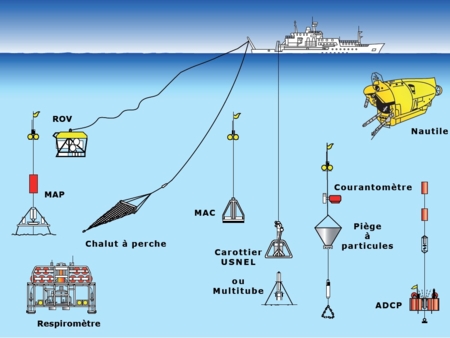Metagenome-assembled genomes of deep-sea sediments: changes in microbial functional potential lag behind redox transitions
Paru dans ISME Communications
Schauberger, C., Thamdrup, B., Lemonnier, C., Trouche, B., Poulain, J., Wincker, P., Arnaud-Haond, S., Glud, R. N., Maignien, L.
Hadal sediments are hotspots of microbial activity in the deep-sea and exhibit strong biogeochemical gradients. But while these gradients are widely assumed to exert selective forces on hadal microbial communities, the actual relationship between biogeochemistry, functional traits, and microbial community structure remains poorly understood. We tested whether the biogeochemical conditions in hadal sediments select for microbes based on their genomic capacity for respiration and carbohydrate utilization via a metagenomic analysis of over 153 samples from the Atacama Trench region (max. Depth 8085 m). The obtained 1357 non-redundant microbial genomes were affiliated with about one third of all known microbial phyla, with more than half belonging to unknown genera. This indicated that the capability to withstand extreme hydrostatic pressure is a phylogenetically widespread trait and that hadal sediments are inhabited by diverse microbial lineages. While community composition changed gradually over sediment depth, these changes were not driven by selection for respiratory or carbohydrate degradation capability in the oxic and nitrogenous zones, except in the case of anammox bacteria and nitrifying archaea. However, selection based on respiration and carbohydrate degradation capacity did structure the communities of the ferruginous zone, where aerobic and nitrogen respiring microbes declined exponentially (half-life 125–419 years) and were replaced by subsurface communities. These results highlight a delayed response of microbial community composition to selective pressure imposed by redox zonation and indicated that gradual changes in microbial composition are shaped by the high-resilience and slow growth of microbes in the seafloor.







